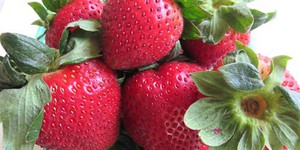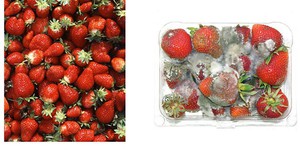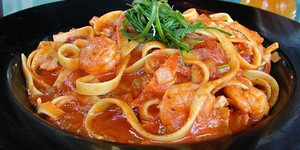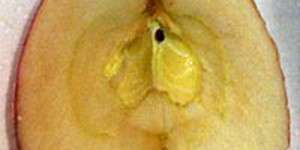Responsible Consumption and Production, Third Grade Science Projects (18 results)
The United Nations Sustainable Development Goals (UNSDGs) are a blueprint to achieve a better and more sustainable future for all.
These projects explore topics key to Responsible Consumption and Production: Ensure sustainable consumption and production patterns.
These projects explore topics key to Responsible Consumption and Production: Ensure sustainable consumption and production patterns.
Science Buddies' third grade science projects are the perfect way for third grade students to have fun exploring science, technology, engineering, and math (STEM). Our third grade projects are written and tested by scientists and are specifically created for use by students in the third grade. Students can choose to follow the science experiment as written or put their own spin on the project.
For a personalized list of science projects, third graders can use the Science Buddies Topic Selection Wizard. The wizard asks students to respond to a series of simple statements and then uses their answers to recommend age-appropriate projects that fit their interests.
Let us help you find a science project that fits your interests, with our Topic Selection Wizard.|
Select a resource
Filter by
Coding Projects
Sort by
|
"Plastic made from milk" —that certainly sounds like something made-up. If you agree, you may be
surprised to learn that in the early 20th century, milk was used to make many different plastic
ornaments —including jewelry for Queen Mary of England! In this chemistry science project, you can figure out the best recipe to make your own milk plastic (usually called casein plastic) and use it to make beads, ornaments, or other items.
Read more
Have you ever wondered why apple slices turn brown once you cut them, or why a yellow banana gets dark spots over time? In this project you will find out why this happens, and how you can keep your apple slices looking fresh!
Read more
New
Have you ever walked next to your favorite ocean, lake, or creek and seen plastic waste everywhere? Have you ever thought about how much plastic breaks down into microplastics and pollutes waterways? Scientists are coming up with new ways to remove these microplastics from our waterways, and now you can test them out for yourself at home.
Read more
Have you ever dreamed of a world where you could take the scraps from last night's dinner and toss them into your car's fuel tank and make gas? Well, we're not quite in "Back to the Future" yet, but in this energy science fair project, you'll discover that food scraps, dead plants, sawdust, and other decaying organic matter, called biomass are a rich source of energy. You can get energy out of biomass by burning it, turning it into a liquid, or by turning it into a gas called biogas. You've…
Read more
Do you ever use plastic wrap to cover a container? Did you know that it is made of plastic, which significantly contributes to the amount of waste in our landfills? There are many alternatives to plastic, and one popular product is beeswax wraps. Are beeswax wraps a suitable replacement for plastic wrap? Find out in this experiment!
Read more
Fuzzy things are often cute, but not when that fuzziness is mold on your strawberry—yuck! Companies look for natural, plant-based ways to protect the berries from mold when they are in the store, waiting for you to purchase them. Would washing them in aloe vera juice protect strawberries from mold? Do this project and find out!
Read more
New
Can AI understand human language? In the future, AI could aid in emergency interpretive service in the hospital when translators aren't available. But can current AI algorithms understand non-verbal languages like sign language? In this science project, you will test whether AI can learn sign language gestures or phrases to see if it can be used for interpretation.
Read more
Fresh strawberries and summer just go together. Walking through the local farmers' market on a warm day, the bright, red strawberries call out to you, beckoning you to buy them and take them home. The next day, as you get ready to savor the delicious berries, you notice that yesterday's juicy, red strawberries are now covered in...eewwww, mold! In this cooking and food science fair project, you will investigate thermotherapy and whether this technique can preserve strawberries and prevent mold…
Read more
A plate of spaghetti, meatballs, and marinara sauce is a delicious and comforting meal. It's also an inexpensive meal, because it only costs about $12 to feed a family of four. And it's easy to make when you're on the go and need to eat a quick, but healthy dinner. Just boil a big pot of water, throw in your favorite pasta, cook for 11 minutes, drain, and top with meatballs and warm marinara sauce. Quick and cheap! But sometimes it feels like forever when you are waiting for water to boil,…
Read more
Have you ever eaten half an apple and saved the other half for later, only to find that, by time you were ready to eat it, the apple did not look as tasty anymore? It may have turned brown and shriveled, and, if left out long enough, it may have spoiled. Do you think you could have prevented the other half from spoiling, or made it spoil less, if you had stored it differently, such as in the refrigerator in a food wrapping? In this cooking and food science project, you will investigate which…
Read more
Fresh whipped cream is the final touch for many delectable desserts. One issue with fresh whipped cream is that it has to be used soon after it is made, especially if it is at room temperature, or it starts to collapse into goo. This is a problem for its use in frostings or inside pastries as filler.
Whipped cream can be stabilized by adding unflavored gelatin. Stabilized whipped cream can be used at room temperature and it has a much longer life. But how much gelatin is just right? Try…
Read more
One way to save water is to turn the faucet off while you brush your teeth. But did you know that there are products that can help save water even while the water is on? In this experiment find out how low-flow faucets and aerators work to reduce the flow of water. How much water can you save?
Read more
|















